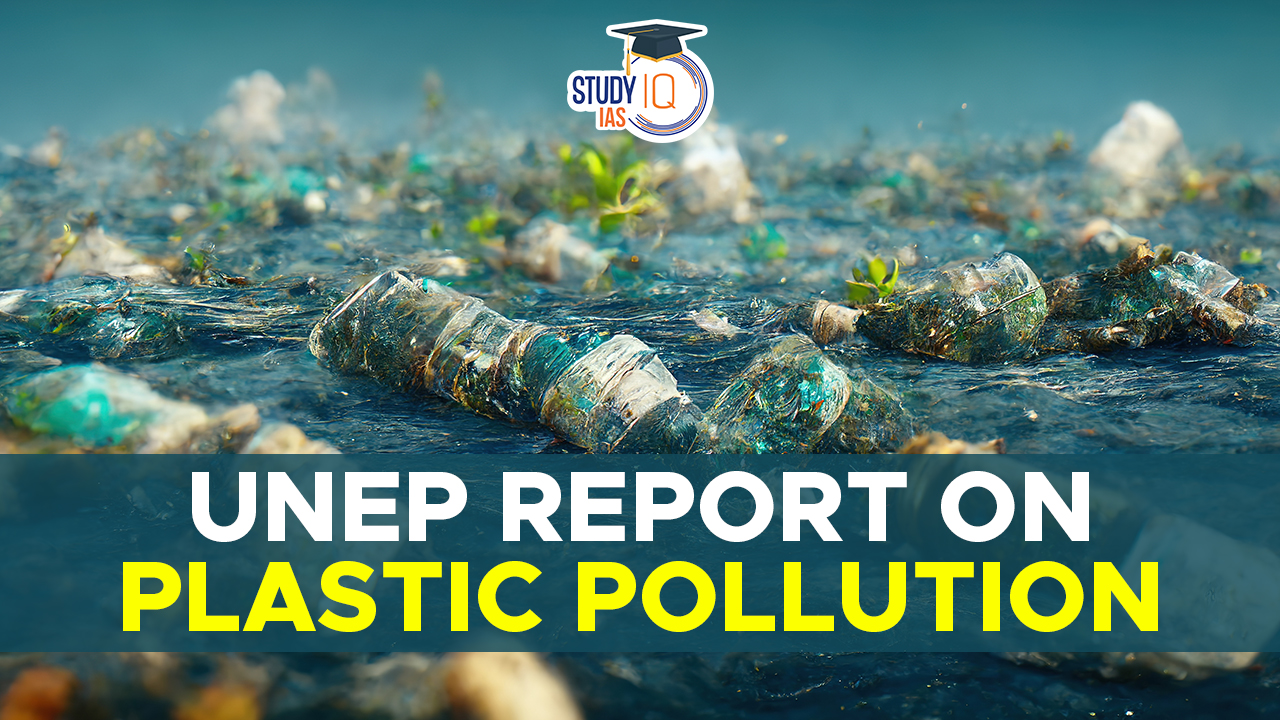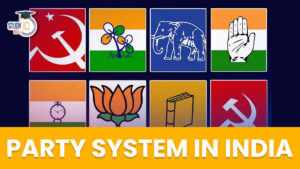Table of Contents
Context: A recent report ‘Turning off the Tap: How the world can end plastic pollution and create a circular economy’ has been released by United Nations Environment Programme (UNEP).
More on News
- This report outlines the magnitude and nature of the changes required to end plastic pollution and create a sustainable circular economy that is friendly to humans and the environment.
- Plastic pollution is the buildup of plastic objects and particles in the environment (like bags, plastic containers, and microbeads) that harms wildlife, natural and wildlife habitats, and mankind. It is most visible in developing Asian and African nations, where garbage collection systems are often inefficient.
What is Circular Economy?
- The circular economy is a model of production and consumption, which involves sharing, leasing, reusing, repairing, refurbishing and recycling existing materials and products as long as possible. In this way, the life cycle of products is extended.
- The circular economy is an alternative to traditional linear economies, where we take resources, make things, consume them and throw them away. This way of living uses up finite raw materials and produces vast quantities of waste.
- Circular Economy is based on three principles:
- Eliminate waste and pollution.
- Circulate products and materials (at their highest value);
- Regenerate nature.

Benefits of Circular Economy
- Protect the Environment: Reusing and recycling products slows down the use of natural resources, reduces landscape and habitat disruption and helps to limit biodiversity loss. It also helps to reduce greenhouse gas emissions.
- Reduce Raw Material Dependence: The global demand for raw materials in increasing with rising population. However, the supply of crucial raw materials is limited.
- Recycling raw materials mitigates the risks associated with supply, such as price volatility, availability and import dependency.
- This especially applies to critical raw materials, needed to produce technologies that are crucial for achieving climate goals, such as batteries and electric engines.
- Create Jobs and Save Consumers Money: Moving towards a more circular economy could increase competitiveness, stimulate innovation, boost economic growth and create jobs.
- Redesigning materials and products for circular use would also boost innovation across different sectors of the economy.
- Consumers will be provided with more durable and innovative products that will increase the quality of life and save them money in the long term.
Key Highlights of the Report
- Currently, world produces 430 million metric tons of plastics each year of which over two-third are short lived products.
- Plastic could emit 19% of global greenhouse gas emissions allowed under a 1.5°C scenario by 2040 and production is set to triple by 2060 if “business-as-usual’ continues.
- Global plastic pollution can reduce by 80% by 2040 if countries and companies make policy shifts to a circular economy.
- Countries need to eliminate unnecessary and problematic plastic uses. They need to make three market shifts: reuse, recycle, and reorient and diversify.
- Reuse: Promoting reuse options, including refillable bottles, bulk dispensers, deposit-return-schemes, and packaging take-back schemes, can reduce 30% of plastic pollution by 2040. To realize its potential, governments must help build a stronger business case for reusables.
- Recycle: Reducing plastic pollution by an additional 20% by 2040 can be achieved if recycling becomes a profitable venture. There is a need to discontinue the fossil fuel subsidies that help make new plastic products cheaper, which disincentivizes recycling and the use of alternative materials.
- Reorient and diversify: The use of appropriate alternative materials for single-use products, such as wrappers and sachets including switching to compostable materials that more easily break down could reduce plastic pollution by 17%.
- Cutting plastics by 80% would save 0.5 billion tons of planet-warming carbon pollution a year, and could also create 700,000 new jobs by 2040 in the developing countries.
- Tackling plastic waste requires stricter standards for non-recyclable waste and increasing the responsibility of manufacturers for the impacts of their plastic products.

India and Circular Economy
- Need: The adoption of circular economy is essential as India is facing huge strain on the supply of resources due to its large population.
- Circular economy can help generate savings of over $624 billion by 2050 across sectors such as food, agriculture, construction, and mobility in India.
- India’s circular economy could touch $45 billion by 2030 which can positively impact the environment in the form of lowered levels of congestion and pollution.
- Sectors such as fashion, construction, agriculture and food, mobility, and rare earth materials can provide the biggest opportunities for circular economy startups.
- Adopting Circular economy will lower the cost of providing services to individuals as compared to traditional take-make-waste model.
- Challenges:
- Lack of a clear vision towards the end-goal of India’s circular economy mission and gaps in actual implementation of the policies.
- The industry is also reluctant in adopting the circular economy model due to supply chain limitations, lack of incentives to invest and complex recycling processes.
- Lack of information to support participation in reusing/ recycling/re-manufacturing processes.
- Lack of legislative mandates for the procurement of recycled/ secondary raw materials.
- Lack of fiscal incentives to businesses to complete the supply chain.
- Lack of clear mechanisms for trading of extended producer responsibility certificates.
- Initiatives:
- Battery Waste Management Rules 2022: The rules cover all types of batteries, including Electric Vehicle batteries, portable batteries, automotive batteries, and industrial batteries.
- The rules are based on the concept of Extended Producer Responsibility (EPR) where the producers of batteries are responsible for the collection and recycling/refurbishment of waste batteries and the use of recovered materials from waste into new batteries.
- To meet the EPR obligations, producers may engage themselves or authorise any other entity for the collection, recycling, or refurbishment of waste batteries.
- Plastic Waste Management Rules in 2022: Aim to strengthen circular economy of plastic packaging waste and development of recycling infrastructure for plastic packaging waste.
- Rules notify instructions on EPR for plastic packaging and allow for sale and purchase of surplus EPR certificates.
- The reuse of rigid plastic packaging material has been mandated in the guidelines to reduce the use of fresh plastic material for packaging.
- E-Waste Management Rules 2022: Restricted the use of hazardous substances (such as lead, mercury, and cadmium) in manufacturing electrical and electronic equipment that have an adverse impact on human health and the environment.
- Environmental compensation to be provided by the companies that don’t meet their target.
- Extended EPR Certificates.
- Battery Waste Management Rules 2022: The rules cover all types of batteries, including Electric Vehicle batteries, portable batteries, automotive batteries, and industrial batteries.
Way Forward
- Reducing pollution from plastics will require action, and international co-operation, to reduce plastic production, including through innovation.
- Better product design, developing environmentally friendly alternatives, as well as efforts to improve waste management and increase recycling is the need of the hour to mitigate plastic pollution.


 Custodial Deaths in India, Types, Issues...
Custodial Deaths in India, Types, Issues...
 MPPSC FSO Recruitment Notification 2025 ...
MPPSC FSO Recruitment Notification 2025 ...
 Party System in India, Feature, Importan...
Party System in India, Feature, Importan...





















